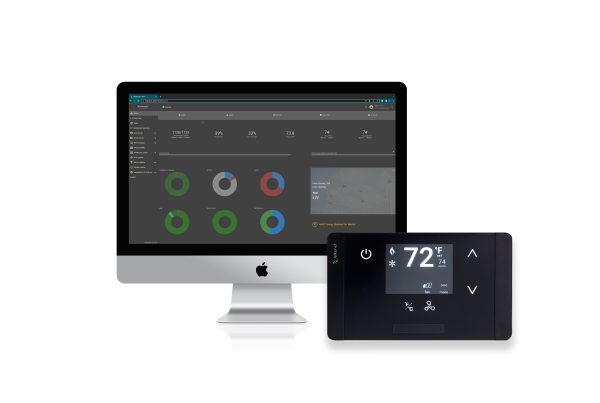 EMS thermostats with built-in occupancy sensors often feature the PIR occupancy sensor. PIR occupancy sensors are robust, especially when they are calibrated to extreme sensitivity. Of course, these thermostats must be strategically placed in order to sense occupancy. If the thermostat is mounted in an ideal location where the embedded PIR sensor is pointed at the beds, then the PIR is typically sufficient for detecting occupancy.
EMS thermostats with built-in occupancy sensors often feature the PIR occupancy sensor. PIR occupancy sensors are robust, especially when they are calibrated to extreme sensitivity. Of course, these thermostats must be strategically placed in order to sense occupancy. If the thermostat is mounted in an ideal location where the embedded PIR sensor is pointed at the beds, then the PIR is typically sufficient for detecting occupancy.
For an added layer of guest comfort and even more energy savings, many Hotels are demanding a dynamic setback, such as Telkonet’s ‘Recovery Time’ feature, where the unoccupied room is a setback not to a set temperature but rather to a dynamic temperature, based on the unique room conditions, such as the sunny or shady side of the building. The thermostats actually learn from their environment.
Most Energy Management Systems use a temperature-based setback approach, that is, based on a number of degrees, otherwise known as ‘fixed setback’, meaning that in the summer they might turn up the temperature 10 degrees when the room is unoccupied. This often leads to an inconsistent guest experience: some guests may experience a 45-minute waiting period before the room cools to a comfortable temperature, whereas other rooms at the property with the same fixed setback may cool in just five minutes, thereby reducing their energy savings potential.
Instead, Hotels, dormitories, and other similar properties are interested in a time-based setback approach, or ‘dynamic’ setback. This means that regardless of environmental factors (the window that remains open, leaks, HVAC performance, etc.), the room will return to the guest’s desired temperature within a specified amount of time. A high end property may define the time as five minutes, sacrificing some energy savings for guest comfort. A more price-conscious property may opt for an extended recovery period, perhaps 15 minutes, for more aggressive energy savings.
Where does your property lie on the guest comfort/energy savings spectrum? It is possible to have both.


